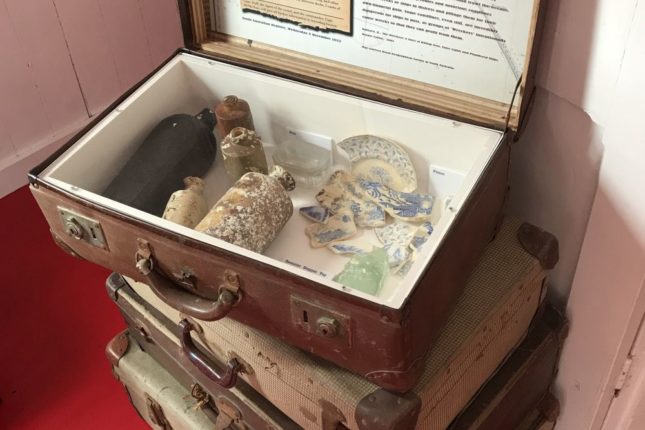
Below we introduce some principles for safe and effective display of items. You will find more on each of the topics outlined on this site, and in the links provided.
1. Items should be displayed in ways that reduce the impact of the external environment.
For example:
- Be aware of where a fragile item is positioned and the amount and intensity of light regularly falling on it. Sensitive items are better displayed behind Perspex or glass or in an enclosed case rather than in the open air. This limits their exposure to pollutants in the external environment and protects them from changes in temperature and humidity.
- Large items in direct contact with the floor or a wall are more at risk of damage from dampness, dust, changes in temperature and pest infestation. They are also more likely to be bumped by a visitor or an enthusiastic worker with a vacuum cleaner. It is better to display the object lifted slightly above the floor, and away from the wall, on plinths or other stable and strong supports.
2. Items should be displayed so that their integrity is maintained.
For example:
- The spine, cover and pages of a book displayed open at a particular page without support will gradually become distorted. The spine might crack and the cover may warp. The book will forever fall open to the same place and the open pages will fade and yellow from prolonged exposure to the light. Using an appropriate book support and turning pages regularly will reduce damage.
- If a dress is hung on a wire hanger or stretched over an unsuitable store mannequin great strain will be placed upon the seams and other fragile parts of the costume. The sharp line of the wire hanger will gradually cut into the fabric. Any creases created by the way the skirt hangs will become ingrained, the fabric weakened and prone to tearing. The parts of the dress exposed to light will fade. Displaying the dress on a padded hanger or on a specially constructed mannequin will contribute to its preservation.
For more on this see the information on object supports.
3. Copies are an acceptable alternative
- The quality of digital scanning and printing allows for accurate copies of original documents and photographs to be made. In many cases it is better to store irreplaceable originals under archival conditions and only use copies for display.
4. Less is more
- Avoid crowding objects into display cases, particularly if it results in items touching or overlapping each other without a barrier in between. Choose the best examples or the items with the best connected stories.
- Avoid displaying very fragile and/or sensitive items and identify risks to any items on long-term display. Rotate items so that each spends less time out on open display. Not only does this add interest for returning visitors but it also aids in the preservation of the collection.

